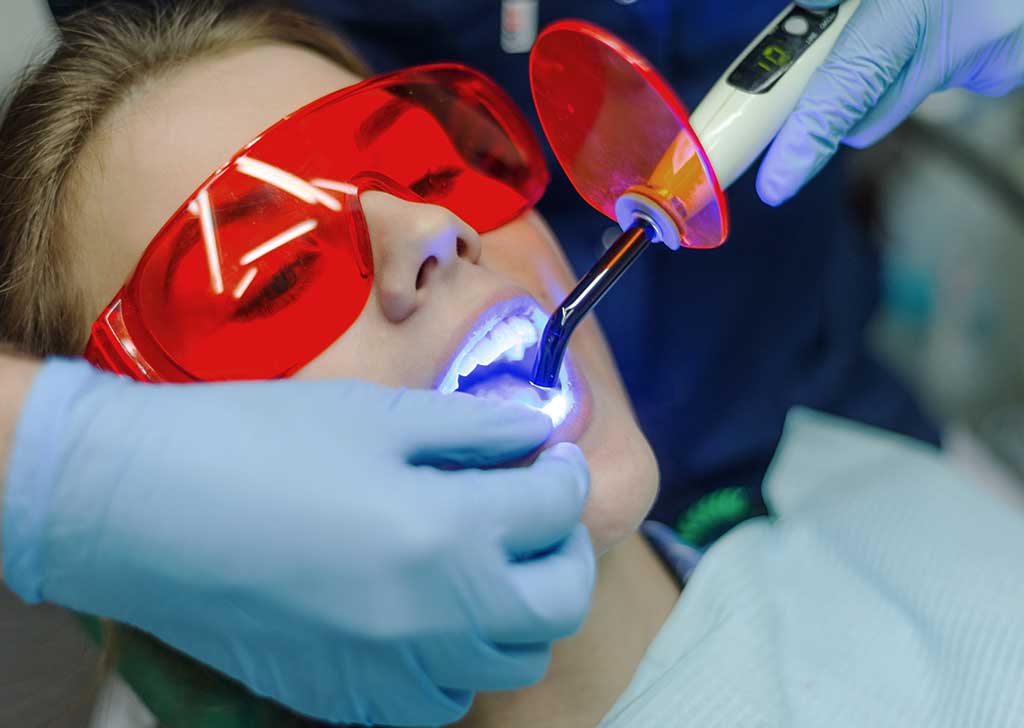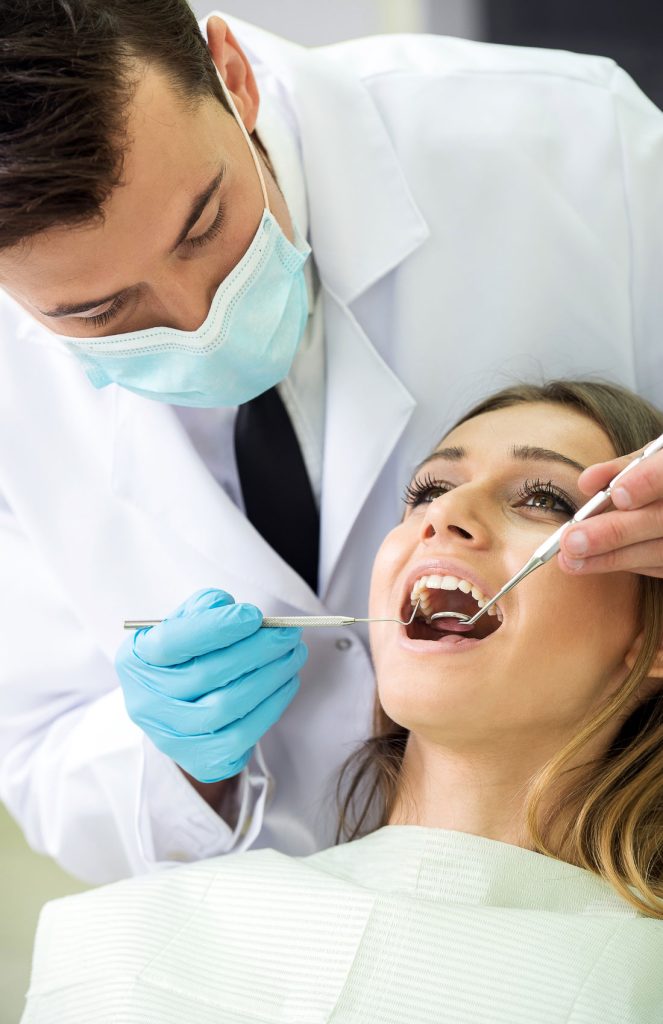GENERAL DENTISTRY
Look after your teeth and gums!
General dentistry helps to prevent and treat the effects of tooth decay, aiming to avoid pain and maintain the natural colour and shape of your teeth.
TEETH WHITENING
Teeth whitening is a procedure that allows you to safely improve the colour of your teeth. We can whiten both live and dead teeth, using the range of systems below.
One of our most popular systems is Nite White, which you can use at home. It’s a completely painless and safe method of teeth whitening based on an active substance administered in the form of a mint or cherry gel. If you’re looking for a convenient method that will give great results, Nite White is for you. It effectively removes discolouration resulting from coffee, red wine or cigarettes.
How does the Nite White method work?
- First your dentist makes an impression of your teeth
- The lab technicians then use this to make a tooth overlay
- You’re given the overlay with a whitening gel and a syringe for filling the overlay
- Every time you want to use it, you first brush your teeth and then get the overlay ready
- When you’ve measured out the right amount of gel, you spread it on the sides of the overlay
- Then you just have to put it over your teeth and press firmly
It’s best to use the overlay for about 3 hours in the day or overnight. After taking the overlay out, brush your teeth thoroughly and rinse with lukewarm water.
In most cases, after the whitening process has finished, you’ll be offered a fluoridation treatment that strengthens the enamel.
You get visible results after just one day; however, to achieve a satisfactory result, whitening can be continued for 10 –14 days.
Whitening of dead teeth
Sometimes dead teeth can be highly discoloured. Factors causing dead teeth to change colour include:
- the type of filling used
- failure to remove residual soft tissue
- infection in the root canal
- some medications
- injury to the tooth
Modern dental technologies now make it possible to whiten dead teeth, but in order for the procedure to be completely safe for your health, your dentist must first determine whether the root canal has the right filling and whether there is any inflammation. This is important because a properly filled root canal prevents the whitening substance leaking into the tooth’s centre along the canal. In some cases, the tooth must first be treated by root canal therapy. Once there are no contraindications, you can start whitening.
The success of the teeth whitening procedure depends mainly on the reasons for the discolouration, so in most cases your dentist will have to give you a thorough examination and determine what can be done. Whitening dead teeth, also known as internal whitening, involves placing whitening material inside the tooth. To do this, your dentist must first remove the filling material, and then over a series of appointments the whitening filling is changed until the desired effect is obtained. If you should get pain in the affected tooth during treatment, you should go straight to the dentist. You should also visit your dentist if the dressing comes off.
Whitening dead teeth may have side effects, such as:
- pain
- sore gums
- internal resorption i.e. inflammation
If you’ve had dead teeth whitened you should remain under medical supervision and periodically go to your dentist for an X-ray.
Once you’ve finished whitening a dead tooth, there may be a slight change in colour, at which time a bleaching agent neutralizer is placed in the centre of the tooth. After about two weeks, the tooth is filled again, or rebuilt prosthetically to protect it against breaking.

